

Key Takeaways
- Customers expect to pay in their own currency and will leave if they can't - 92% prefer local currency and 1 in 3 abandon purchases without it
- Multi-currency payments help both customers and your business by making checkout easier while reducing currency conversion costs and accounting headaches
- Success comes from choosing the right regions first, picking a good payment provider, and having a clear plan for handling exchange rates and fees
- Going global means following different countries' rules about data privacy, money transfers, and taxes, so you need tools that handle compliance automatically
Expanding your business to other countries comes with many challenges. One of them is how to get paid and pay others in the currencies they use.
Customers expect to browse and pay in their local currency. When they don't, conversions drop, and trust suffers. Multi-currency payments bridge that gap by helping you manage the behind-the-scenes complexity of currency conversion, settlement, and compliance.
This guide breaks down everything you need to know about multi-currency payments in 2025. You'll gain actionable insights so you can confidently expand your business globally.
What are multi-currency payments?
Multi-currency payments refer to the ability to send, receive, and process payments in multiple currencies. This means your customer can pay in their local currency while you receive the money in your preferred currency. The process is automatically handled by your payment service provider (PSP).
Example: You're running an online store based in the UK and expanding into Japan. Instead of displaying prices in British Pounds (GBP), your site automatically displays prices in Japanese Yen (JPY) to visitors in Japan. The customer pays in JPY using their local card, while you receive the funds in GBP through your PSP.
Multi-currency payments provide a local experience for global customers, helping you manage currency exchange, reduce additional fees, and stay compliant across different markets.
The core functionality of multi-currency payments typically includes:
- Displaying prices in the customer's local currency (automatically or manually)
- Processing payments in that local currency using local methods (cards, wallets, etc.)
- Converting and settling funds to the merchant's preferred currency
- Managing FX risk and compliance efficiently

Multi-currency payments vs. cross-border payments
While these terms are often used interchangeably, multi-currency payments and cross-border payments serve different purposes and offer distinct advantages. Understanding the difference helps businesses choose the right approach for their international expansion strategy.
Why multi-currency payments matter in 2025
In 2025, the way businesses handle payments influences everything from how easily they grow in new regions to how often they convert a visitor into a customer. Here's why multi-currency payments matter more than ever:
Global growth continues to shift online
E-commerce sales are on track to reach $6.88 trillion this year. Much of that growth is coming from mobile-first markets in Asia, Latin America, and the Middle East. These regions are expanding up to three times faster than mature economies, and their customers are eager to make purchases.
At the same time:
- SaaS global market across borders is expected to exceed $305 billion by 2026
- Marketplaces are operating across 50 or more countries
- Remote teams and global partnerships are increasing
This shift creates more opportunities to sell, but it also brings complexity. Every buyer expects a local experience.
When businesses don't support local currencies:
- Customers might face unclear pricing and extra conversion fees
- Vendors lose part of their revenue to poor exchange rates
- Finance teams spend more time on manual reconciliation
With multi-currency payments, those problems are avoided. Customers pay in their currency. Payouts to partners are simpler. Finance operations stay clean and predictable.
Customers want a familiar experience
92% of shoppers prefer to see prices in their currency, and 1 in 3 will abandon the checkout if they don't. This number shows the value of having a localized currency integration in your business.
In addition, foreign currency at checkout raises questions, such as:
- Will there be extra fees?
- Is the brand shipping to this country?
- How much will this actually cost?
These doubts may lead to lost sales. Local currency helps answer those questions before they're asked. It tells the buyer that they're in the right place and the business is ready to serve their market. For SaaS companies and marketplaces, this also leads to better billing performance and retention.
Currency choice affects conversions and trust
Multi-currency support makes an immediate difference to the bottom line. It can:
- Boost conversion rates in international markets
- Reduce cart abandonment
- Improve recurring billing success
- Increase customer confidence
When pricing feels familiar, and the process is smooth, people are more likely to complete a purchase and return. Businesses that offer multi-currency payments are already winning global buyers. Those who don't are making it easier for others to take their place.
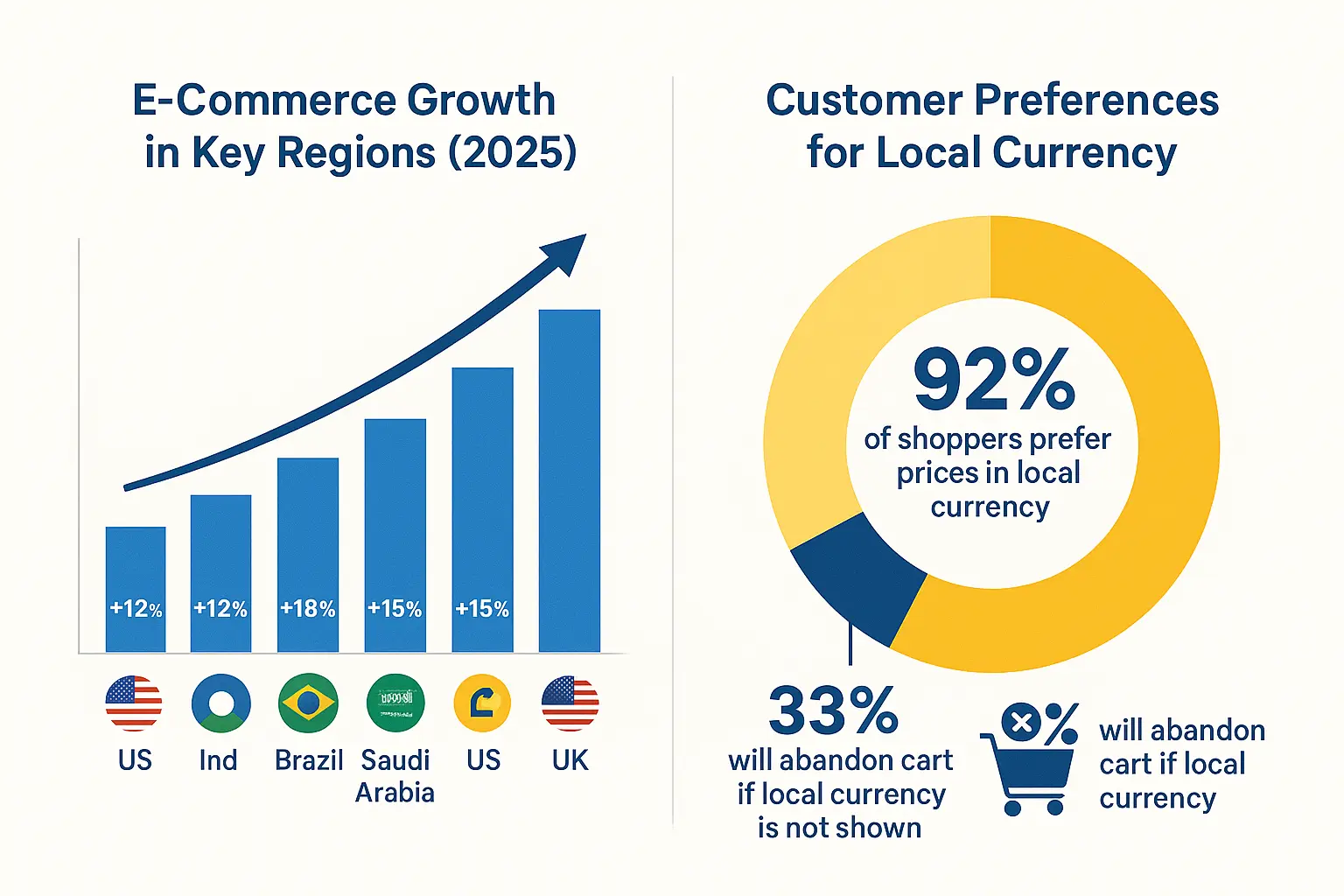
How multi-currency payments work
You already know what multi-currency payments are all about. Now, to gain a much deeper understanding, let's break down how the process works, who is involved, and how currency conversion is handled behind the scenes.
Overview of currency routing and conversions
When a customer makes a purchase, the multi-currency payment system automatically detects their preferred currency through their location, browser settings, or manual selection.
The system then processes the transaction through a series of routing decisions that determine how the payment flows from the customer's account to the merchant's final settlement account.
The core process involves three key stages:
- Detection phase: The system identifies customer currency preference and merchant settlement requirements
- Conversion phase: Exchange rates are applied if currencies differ between customer payment and merchant settlement
- Settlement phase: Funds are routed through appropriate banking networks to reach the merchant's account
Merchants (you) have flexibility in configuring this process. The routing system adapts to these preferences, ensuring funds flow through the most efficient path while minimizing costs and settlement delays.
Roles of PSPs, banks, and FX providers
Payment Service Providers (PSPs) act as the central coordinators, managing the entire multi-currency transaction from start to finish.
Major PSPs, such as Stripe, Adyen, and Checkout.com, provide integrated platforms that handle currency detection, conversion, and settlement without requiring merchants to manage multiple financial relationships.
They maintain global partnerships that enable competitive rates and fast processing across numerous currencies.
Banks serve multiple essential functions in the multi-currency ecosystem:
- Acquiring banks: Process card payments and provide merchant settlement accounts
- Correspondent banks: Facilitate cross-border transfers between different currency zones
- Local banking partners: Offer in-country accounts for faster, cheaper local settlement
FX providers specialize in currency conversion and offer more competitive exchange rates than traditional banks. They can be integrated directly into PSP platforms for convenience or accessed as third-party services for better rates.
Specialized providers like Wise and Currencycloud often provide superior rates for high-volume merchants, while PSP-integrated solutions offer simplified management and streamlined operations.
Real-time vs. Dynamic vs. Fixed exchange rate options
Real-time exchange rates reflect current market conditions and are updated continuously based on global forex markets. These rates provide the most accurate pricing for customers and ensure merchants receive fair market value.
However, they introduce price volatility that can affect consistency and make financial planning more challenging for businesses with tight margins. PSPs set dynamic exchange rates and typically include built-in markups, ranging from 1% to 4% above interbank rates.
Key characteristics include:
- Predictable pricing: Rates update less frequently than real-time options
- Simplified fee structure: Markup is included in the rate rather than charged separately
- Stability: Reduces short-term volatility for both merchants and customers
Fixed exchange rates remain locked for specific periods, from hours to months, depending on the agreement. These rates are ideal for businesses running promotional campaigns or those requiring predictable cash flow.
While fixed rates eliminate short-term FX risk, they can become unfavorable if market conditions change significantly during the lock period. Merchants often combine fixed rates with volume commitments to secure better pricing terms.
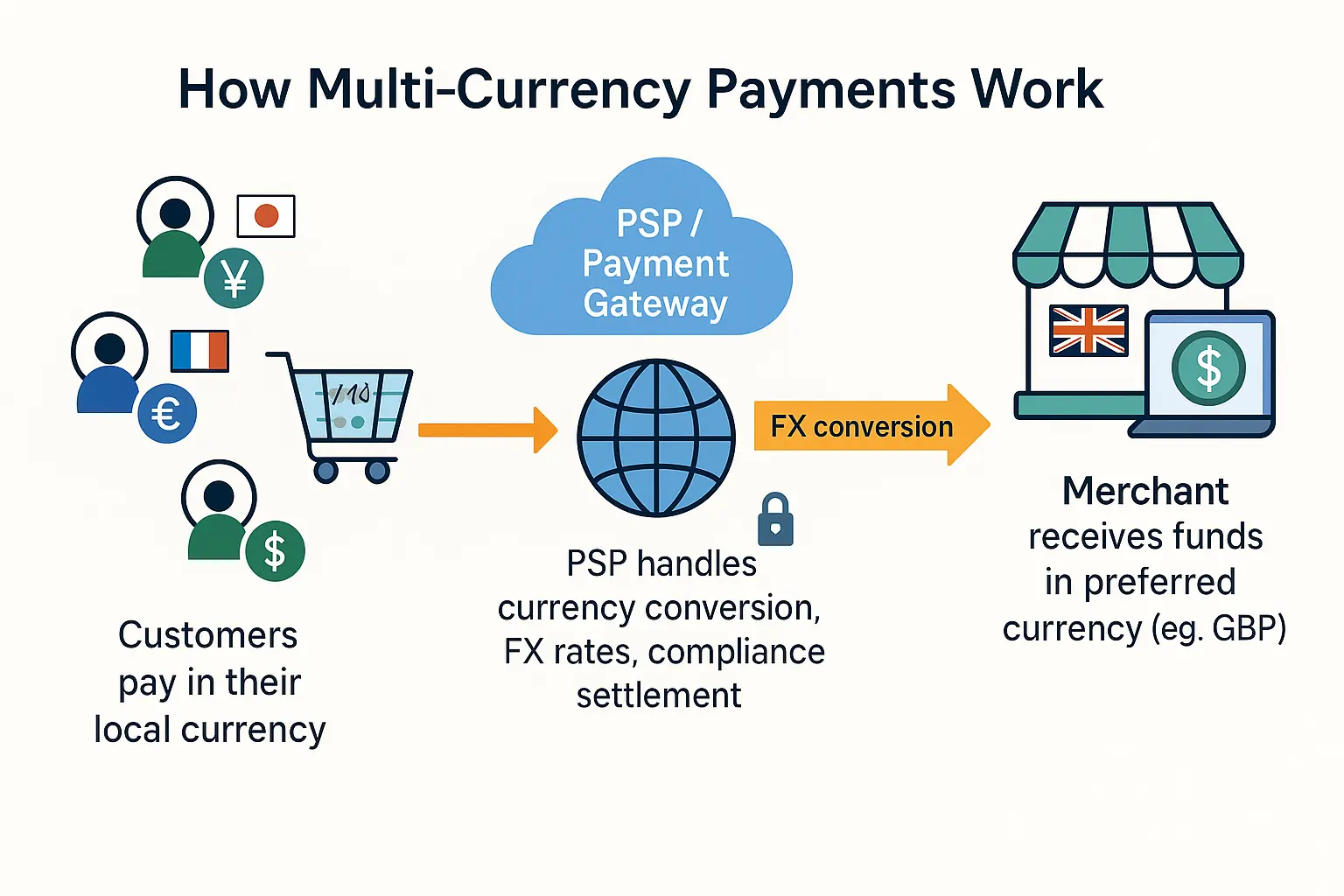
Key benefits of supporting multi-currency transactions
Multi-currency payments can improve your customer experience, increase conversions, and run global operations more efficiently. Here’s a detailed breakdown of the benefits it offers.
Better experience and higher conversions
As mentioned, customers who see prices in their local currency often complete a purchase. It removes uncertainty, builds trust, and makes checkout feel familiar. This leads to measurable improvements in conversion rates, especially in international markets.
It also reduces cart abandonment. Many buyers drop off when they see unfamiliar pricing or fear extra fees from their bank. Multi-currency payment takes those concerns out of the equation.
Tip: Did you know that Geo Targetly can help you tackle high cart abandonment rates? Take advantage of our cart abandonment solution during your free trial!
Competitive advantage in global markets
Businesses that localize their payments stand out because international buyers see it as a sign that you’re invested in their region. It builds credibility and helps you expand into new markets without needing a local entity or major operational changes.
For SaaS platforms and digital marketplaces, multi-currency pricing also improves subscription retention. When customers are billed in the currency they use every day, renewals feel more natural and less like a foreign transaction.
Local settlement improves operations
Multi-currency support isn't only about front-end pricing. It also helps finance and operations teams manage payouts and cash flow. With the right setup, businesses can:
- Settle payments in the same currency they receive, avoiding conversion losses
- Lower foreign exchange costs by batching or timing conversions
- Reduce reconciliation headaches across accounts and countries
These operational gains support better forecasting, fewer payment errors, and more control over how funds move globally.
Common challenges and how to overcome them
While multi-currency payments offer value, it also introduces operational and financial complexity. Below are the most common issues businesses face, along with practical steps to solve them.
FX volatility
Exchange rates can fluctuate daily. If a customer pays in one currency but the business settles in another, even small shifts in value can reduce margins or make forecasting unreliable.
How to handle it:
- Use fixed FX rates when pricing: Some payment providers let you lock in exchange rates for a set period (like 24 hours or 7 days). This is helpful during promotions or when offering consistent pricing across regions.
- Define your FX spread policy: Choose whether you want to pass FX costs to the customer or absorb them. For example, you could set a small markup on dynamic FX rates to protect margins.
- Set rules for conversion timing: If you hold funds in multiple currencies, create internal rules for when to convert. Use thresholds (such as "convert once balance hits $10,000") or timing (weekly, monthly, etc.) to reduce exposure.
Compliance and regulations
Cross-border payments must comply with both local and international regulations. This includes AML (anti-money laundering), KYC (know your customer), and data privacy laws. Non-compliance can lead to penalties or blocked transactions.
How to handle it:
- Work with a globally licensed PSP: Platforms like Stripe, Checkout.com, and Adyen are regulated in key regions and handle local compliance, including customer verification and reporting.
- Map your transaction flow: Document where customer data is stored, which entities process payments, and what jurisdictions are involved. This helps with GDPR, PSD2, and other regulatory frameworks.
- Monitor high-risk regions: Some countries have currency controls or sanction rules. Use tools that flag restricted locations and automatically block unsupported currencies.
Accounting and reconciliation
Dealing with payments across different currencies can lead to discrepancies in records, especially when varying rates apply during settlement, refunds, or bank transfers.
How to handle it:
- Use accounting software with multi-currency support: Tools like NetSuite, Xero, and QuickBooks allow you to track currency gains and losses, set base currencies per account, and report on FX impact automatically.
- Match the settlement currency to your reporting currency: If possible, configure your PSP to settle in the same currency you use for accounting purposes. This reduces unnecessary conversions and keeps books cleaner.
- Automate reconciliation: Look for PSPs or integrations that provide itemized reports, including order amount, FX rate applied, settlement amount, and fee breakdown, and then sync them directly with your accounting platform.
Refunds and chargebacks across currencies
Refunding a payment in a different currency than it was originally received in can result in additional losses due to exchange rate fluctuations or extra fees. Some processors charge FX twice, once during the original payment and again during the refund.
How to handle it:
- Always refund in the original currency: Set your PSP to return funds using the same currency and method as the original transaction. This avoids a second conversion and any additional costs to you or the customer.
- Create buffer policies: For international customers, consider refunding slightly less than the full amount to account for potential FX loss. Communicate this in your refund terms.
- Track FX loss from refunds: Add a reporting field in your system to flag when refunds result in a loss so finance can account for it and adjust pricing if needed.
Step-by-step guide to implementing multi-currency payments
Adding multi-currency payments requires careful planning to ensure success. The following framework provides a clear roadmap for implementation, helping you avoid common pitfalls and maximize the benefits of accepting international payments.
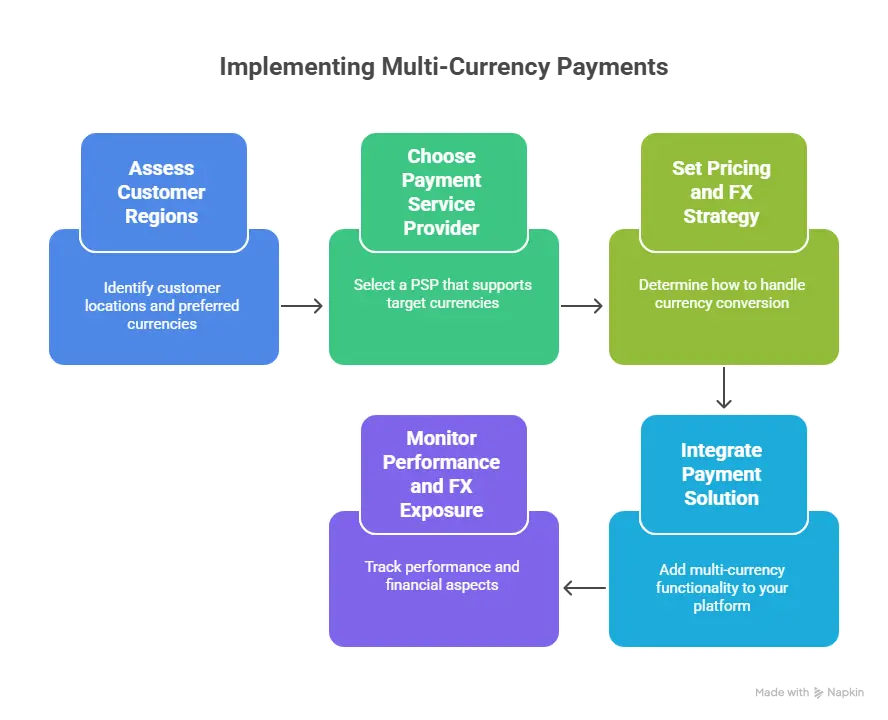
1. Assess customer regions and preferred currencies
Begin by identifying the locations of your international customers and the currencies they typically use. This data-driven approach helps you prioritize the most valuable markets and avoid guessing which currencies to support first.
How to do it:
- Use analytics tools (like Google Analytics or your payment dashboard) to segment traffic and purchases by country or region.
- Review support tickets, cart abandonment rates, and user feedback for signs that currency confusion is a problem.
- Prioritize regions with high traffic but low conversion as strong candidates for local currency support.
2. Choose the right payment service provider (PSP) or platform
Select a PSP that supports your target currencies and regions while offering the features you need. The right provider determines how flexible and cost-effective your multi-currency setup will be.
How to do it:
- Compare providers like Stripe, Checkout.com, Adyen, Airwallex, and Rapyd.
- Evaluate based on:
- Supported currencies and local payment methods
- FX rate transparency and fees
- Settlement currency options
- Regulatory coverage in your target regions
- Check if they offer tools for geo-based currency display and automated conversion.
3. Set your pricing and FX strategy
Determine how you'll handle currency conversion and who will bear the foreign exchange costs. This strategy affects both your margins and customer experience.
How to do it:
- Choose between:
- Fixed FX rates: Set a rate for a limited time (e.g., daily or weekly). Useful for promotions and consistency.
- Dynamic FX rates: Rates update in real time or are provided by your PSP with a small markup.
- Determine who covers the FX spread:
- Absorb it into your margins.
- Pass it on to customers with pricing buffers.
- Maintain competitive regional pricing by researching local market standards, not just conversion rates.
4. Integrate the payment solution into your platform
Add multi-currency functionality to your website, store, or platform using your chosen PSP's APIs or plugins. Accurate integration ensures that currency logic works consistently across checkout, invoicing, receipts, and reporting. Poor implementation can cause pricing mismatches or settlement errors.
How to do it:
- For custom sites, use your PSP's API to:
- Detect user location and set the default currency.
- Convert prices in real-time or using fixed rates.
- Route payments to the correct accounts
- For platforms like Shopify, Magento, or WooCommerce:
- Use official PSP plugins that support multi-currency
- Enable localized pricing in your storefront settings.
- Test multiple scenarios, including different currencies, refunds, foreign exchange fluctuations, and edge cases such as failed conversions.
5. Monitor performance and FX exposure
Track how multi-currency payments are performing over time, both from a business and financial perspective. Ongoing performance tracking enables you to improve pricing, reduce losses, and prioritize regions with the best returns.
How to do it:
- Measure key metrics:
- Conversion rate by region
- Cart abandonment rate for foreign currencies
- Average order value (AOV) for international customers
- Currency-related refund or chargeback volume
- Track FX exposure:
- Monitor gains or losses from exchange rate changes.
- Identify currencies with frequent discrepancies.
- Use reporting tools from your PSP or finance platform to identify trends and make adjustments.
Localizing currency display automatically based on user location
One of the most overlooked steps in implementing multi-currency payments is how prices are shown to visitors. Even if your system supports multiple currencies, asking users to manually choose their own can still create friction.
Instead of waiting for customers to select their currency, you can automatically detect it based on their location. But how?
Using IP geolocation, your site can detect a visitor's location (e.g., Japan) and instantly display prices in their local currency (e.g., JPY), along with the correct symbol and formatting.
This makes the pricing feel native and removes the cognitive load of calculating exchange rates or second-guessing fees.
Tools like Geo Targetly's Geo Currency handle this process automatically. With a single JavaScript snippet, you can:
- Detect the visitor's country via IP
- Match them to the correct currency.
- Display local pricing on product pages, landing pages, or across your store.
It works across platforms like Shopify, Webflow, Magento, WooCommerce, and custom-built sites without requiring a full rebuild or custom backend.
Because the pricing is updated on the front end, it integrates cleanly with your existing systems and checkout logic. You stay in control of the actual payment processing through your PSP, while the visitor gets a localized experience from the first interaction.
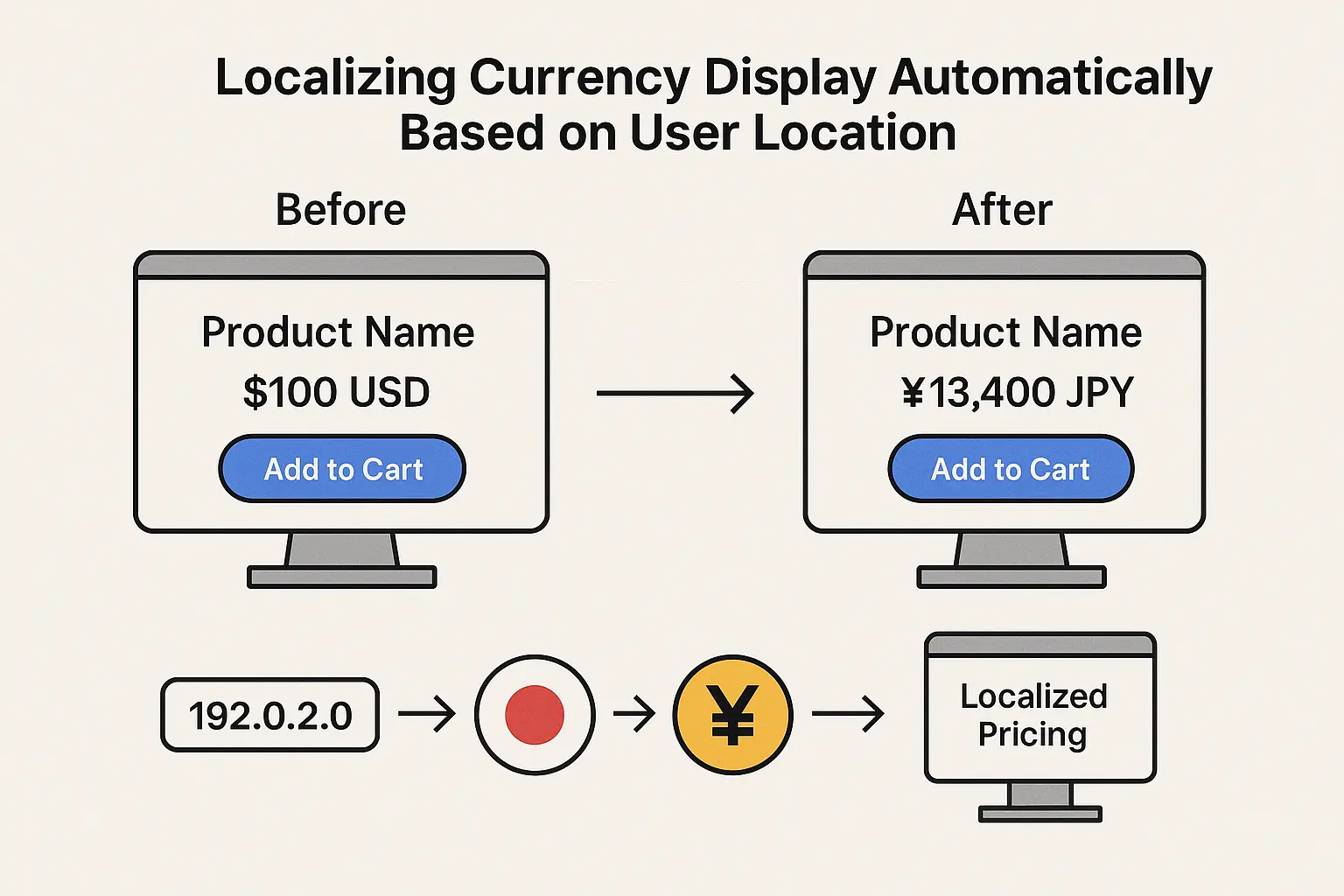
Compliance and regulatory considerations
Expanding into new markets also means navigating local financial, privacy, and tax laws. To stay compliant and avoid disruptions, it is essential to understand the key regulations governing multi-currency payments across various regions.
1. Data privacy and cookie consent laws
When you collect customer information during the payment process, you're responsible for how that data is used and stored. Most regions now require clear communication, user consent, and secure data handling.
Key laws to know:
- GDPR (General Data Protection Regulation – European Union): Requires websites to get explicit consent from users before tracking them with cookies or collecting personal data. It also mandates that data be stored securely and that users have access to view or delete their data.
- CCPA (California Consumer Privacy Act – United States): Gives California residents the right to know what personal data is being collected and the ability to opt out of having it sold or shared.
- LGPD (Lei Geral de Proteção de Dados – Brazil): Similar to GDPR, this law gives users rights over their data, including how it's processed and stored.
- PIPEDA (Personal Information Protection and Electronic Documents Act – Canada): Requires transparency in how personal data is used and collected, particularly for e-commerce and digital services.
- SHIELD Act (Stop Hacks and Improve Electronic Data Security – New York, US): Requires businesses to implement reasonable safeguards to protect the personal data of New York residents.
How to manage it: Use a location-aware cookie consent tool to automatically display the correct privacy banner based on the user's location.
Pro tip: Tools like Geo Targetly's Geo Consent make it easy to display the right cookie banner based on your visitor's location. For example, only show GDPR consent banners to EU users, CCPA opt-out options to California users, and no banner at all for visitors from countries that do not have such requirements.
This ensures legal compliance while enhancing the user experience by minimizing unnecessary interruptions. You can also customize the language, format, and behavior of banners for specific countries, all without coding, using a one-time JavaScript snippet.
2. Currency control laws
Some countries place legal limits on how money enters or leaves the country. These restrictions, known as currency controls, can impact how you collect payments or make payments to vendors.
Examples:
- China has strict limits on the amount of foreign currency that residents can purchase or send abroad.
- India requires additional documentation for certain outbound transfers and corporate remittances.
- Nigeria and other countries may delay or restrict foreign exchange transactions due to local reserve policies.
How to manage it: Work with a globally regulated payment service provider (PSP) that supports local payment methods and is experienced with restricted markets. Some PSPs and cross-border platforms offer automated compliance filters to block unsupported transactions, helping you stay within legal limits.
3. AML and KYC requirements
AML (Anti-Money Laundering) laws require businesses to prevent money laundering and illegal transactions by monitoring payments and customer activity to ensure compliance.
KYC (Know Your Customer) regulations require verifying the identity of users when sending or receiving large amounts or operating in high-risk markets.
These rules are particularly important if you're operating a marketplace, platform, or financial service where users transact with each other across international borders.
How to manage it: Choose a payment platform that performs built-in AML and KYC checks. This shifts the responsibility to your provider and removes the need to build a separate compliance system yourself.
4. Tax and billing compliance
Selling in multiple regions also means navigating local tax rules, including sales tax, value-added tax (VAT), and goods and services tax (GST).
- VAT is required when selling goods or services into the EU, even if your business is based outside the EU.
- GST is required in countries like Australia, New Zealand, and Canada for digital goods and SaaS platforms.
- Some regions mandate real-time invoicing or local tax registration, especially for recurring payments.
How to manage it: Use a PSP or third-party tool that supports automatic tax calculation and invoicing for global sales. Most leading platforms already include this as a built-in feature.

Real-world use cases and case studies
Different types of businesses are utilizing multi-currency payments to enhance conversions, lower costs, and expand into global markets. To see what this looks like in practice, here's a quick look at how it's being applied in real-world scenarios:
E-commerce store expanding into Asia
Australian fitness apparel brand Doyoueven sought to expand its international sales, including into key Asian markets such as Japan, Singapore, and Hong Kong. Initially, the site allowed international shoppers to browse prices in their local currency but charged all customers in AUD at checkout.
This mismatch led to confusion, cart abandonment, and a growing number of customer complaints about unexpected currency conversion fees.
To solve this, Doyoueven implemented true multi-currency support using Shopify Payments powered by Stripe, enabling both browsing and checkout in the same currency. Now, shoppers in Tokyo see prices in JPY and pay in JPY.
Impact:
- +89% year-over-year growth in international sales
- +122% total sales increase in one month after implementation
- Dramatic reduction in customer service tickets related to currency issues
This case demonstrates how aligning pricing and billing currencies, particularly in diverse regions such as Asia, can significantly enhance global conversion and customer trust.
SaaS startup offering pricing in 4 currencies
Slack, the workplace messaging platform, operates globally and serves millions of users from businesses of all sizes. To better support its international user base, Slack introduced localized pricing in key markets. Users can now see and pay for plans in USD, EUR, GBP, JPY, AUD, and SEK, depending on their location.
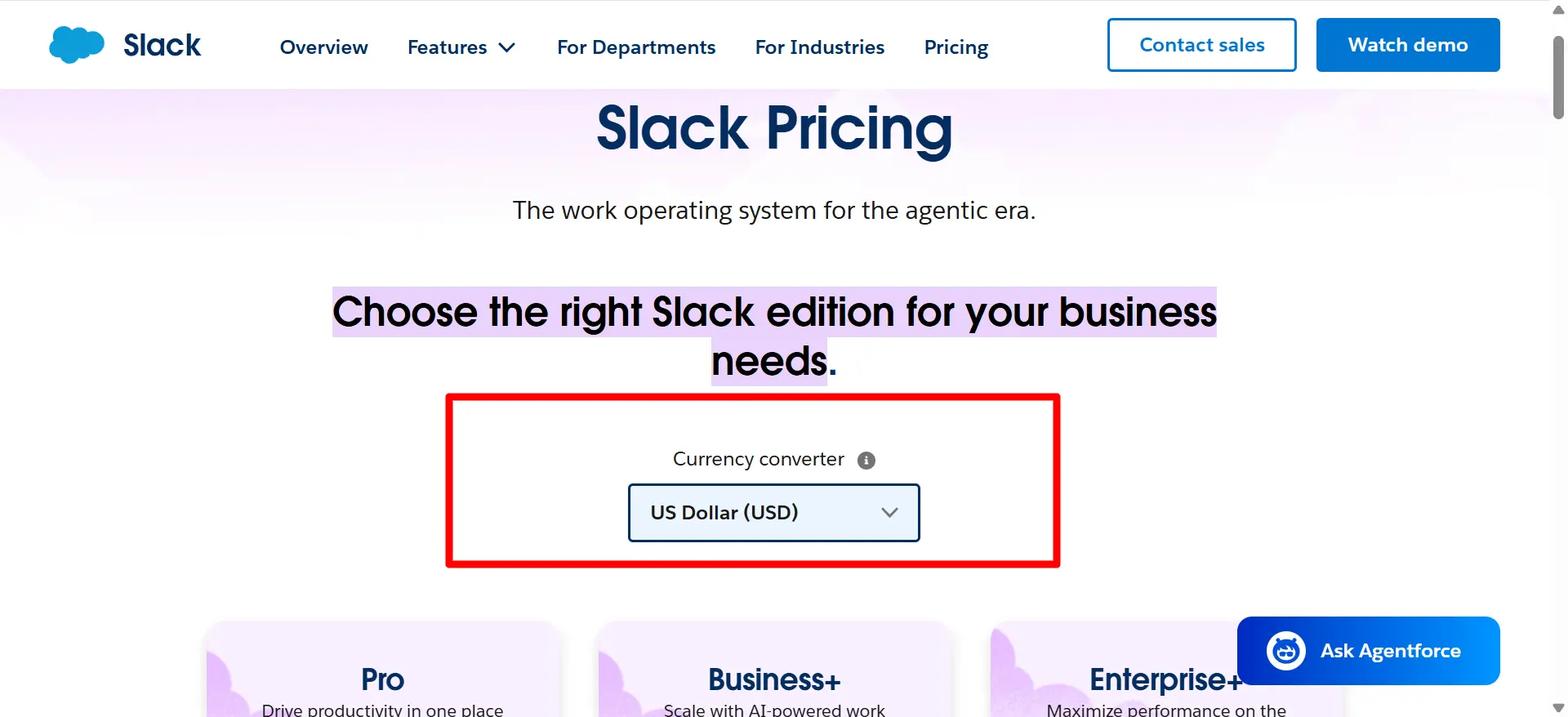
Slack uses smart geolocation and a currency selector on its pricing page, ensuring that customers view pricing in their currency and are billed accordingly. Payment processing and currency conversion are handled through Stripe, enabling smooth recurring billing in local currencies.
Impact:
- Higher international conversion rates
- Reduced failed payments due to currency mismatch
- Enhanced brand perception as a global, user-friendly SaaS provider
By offering pricing in multiple currencies, Slack simplified purchasing for users worldwide and scaled its global customer acquisition more effectively.
Marketplace with buyers in 50+ countries
Peer-to-peer car-sharing platform Getaround needed to scale across Europe while providing a seamless payment experience for both renters and car owners in various countries. It implemented Stripe Connect to support multi-currency payments and payouts.
With this setup, a renter in Germany could pay in EUR, while a host in the UK could receive their payout in GBP, with currency conversion handled automatically. Getaround also integrated local payment methods and 3D Secure authentication to meet regional compliance standards.
Impact:
- Launched in 5 new European countries without building separate payment stacks
- Doubled fleet size year-over-year
- Reduced payment-related development time by months
Multi-currency support allowed Getaround to scale faster and deliver a native, trustworthy experience across a diverse user base, without rebuilding core infrastructure for each new region.
The future of multi-currency payments
As global commerce becomes more digitized, multi-currency payments are evolving beyond simple conversions. The next wave is about flexibility, speed, and smarter systems that adapt to both the business and the user in real-time. Here's where the space is headed:
Rise of crypto and stablecoins
Cryptocurrencies and stablecoins are becoming practical alternatives for cross-border payments. They can reduce costs and expedite settlement times, especially when using stablecoins like USDC or USDT, which are tied to major fiat currencies and thus avoid typical cryptocurrency volatility.
Leading payment providers are starting to support crypto in different ways, such as:
- Accepting crypto and settling in fiat
- Converting crypto to fiat at the point of sale
- Using stablecoins to transfer value faster across borders
While regulations are still evolving, cryptocurrency's potential for faster, cheaper, and 24/7 payments is driving wider adoption. As rules become clearer, crypto and stablecoins will likely become a standard payment option.
AI and automation in FX management
Artificial intelligence is revolutionizing how businesses manage foreign exchange risk and optimize currency conversions. AI systems can analyze market patterns, predict currency movements, and automatically execute conversions at optimal times.
This technology is particularly valuable for businesses with high transaction volumes or complex multi-currency operations.
Key AI applications in FX management include:
- Predictive analytics: Machine learning models forecast currency movements and identify optimal conversion timing
- Dynamic hedging: AI adjusts hedging strategies based on real-time market conditions and business exposure
- Risk assessment: Automated systems monitor and alert businesses to currency exposure risks
Automation is streamlining operational processes by eliminating manual intervention in routine FX decisions. Smart systems can set conversion triggers based on predefined rules, automatically rebalance currency portfolios, and optimize settlement timing across different currencies.
This automation reduces human error, improves efficiency, and enables businesses to respond quickly to market opportunities.
Multi-currency wallets and smart payment routing
Multi-currency wallets are becoming sophisticated financial management tools that hold multiple currencies simultaneously and automatically optimize payment routing.
These wallets can store traditional currencies, cryptocurrencies, and stablecoins in a single interface, allowing users to pay in their preferred currency while merchants receive funds in their chosen settlement currency.
Smart payment routing technology analyzes multiple factors to determine the most efficient payment path:
- Cost optimization: Compares fees across different payment rails and currencies
- Speed requirements: Routes urgent payments through faster, potentially more expensive channels
- Regulatory compliance: Ensures routing complies with local regulations and restrictions
The future of multi-currency wallets will include features such as automatic currency conversion based on spending patterns, intelligent cash flow management that maintains optimal currency balances, and seamless integration with business accounting systems for accurate financial reporting.
These wallets will likely become central hubs for international commerce, handling everything from payment processing to currency risk management in a unified platform.
Conclusion: Is your business ready for multi-currency?
Multi-currency payments have become an essential part for businesses to serve international customers. And the good news is, you don’t need to rebuild your whole payment system from scratch. Many modern payment tools let you add multi-currency with just a few clicks.
For example, Geo Targetly can automatically show the correct currency based on where someone is visiting from. It helps your business feel local, even if you're not. Whether you run an online store, a software business, or a marketplace, it can help you show local prices while keeping things simple for you.
Your international customers are already visiting your site. The question is: are you ready to serve them in a way that feels natural and trustworthy?

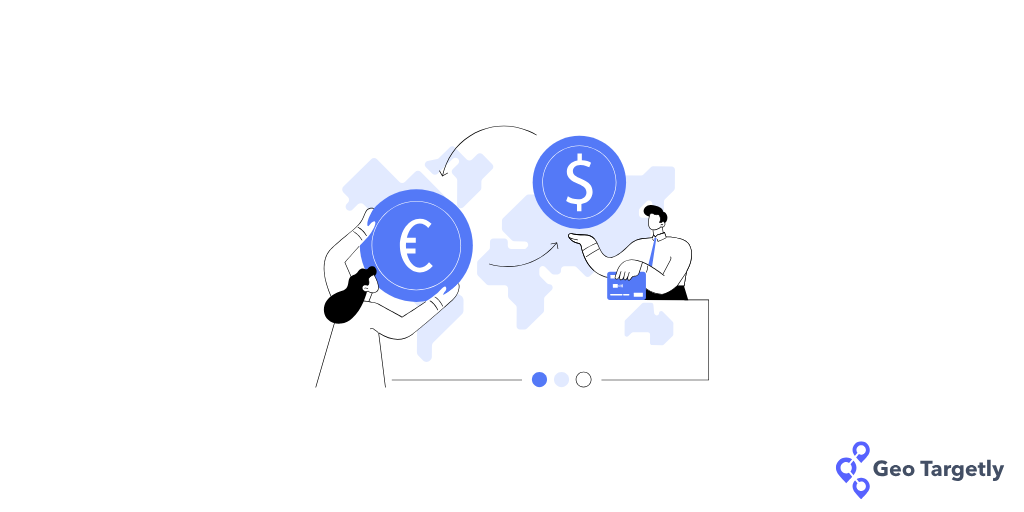



.webp)


































